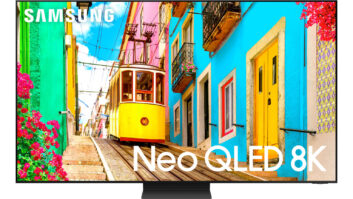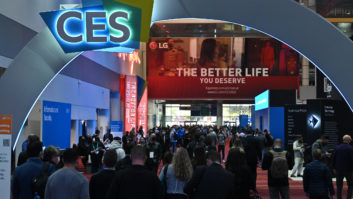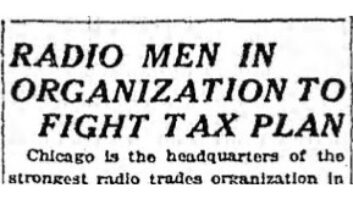Y2K.
That pithy alphanumeric was at the forefront of everyone’s mind in 1999. For some it was just a neat way of naming the new year, but for others it was a harbinger of doom. As legend had it, a small coding error buried deep in most computers would force them to shut down at the stroke of midnight on Jan. 1, 2000. According to the alarmists, airplanes would fall from the sky, ATMs would shut down, dogs and cats would start living together. In short, Y2K would signal the end of the technological world as we knew it.
While the Y2K threat proved baseless, to placate consumers worried that their PCs would roll over and die as the ball dropped in Times Square, retailers and manufacturers were forced to take expensive steps to ensure that their systems would be up and running.
As with most fairytales, all ended happily ever after.
The same could not be said for the dot-com bubble, which was starting to show signs of finally deflating, despite the fact that online retailing was catching on with some of the major players in the business. Best Buy began selling through its Web site in July the Diamond Multimedia Rio PMP300 MP3 player, and Tandy (RadioShack) opened its e-tail operation a few months earlier. Amazon also added a CE section that summer.
While the MP3 player still had a bright future ahead, other products were not so lucky in 1999. Divx, a competitor to the DVD as a video format, reached its peak and yet totally failed during the year. The technology was backed by Circuit City and enjoyed a somewhat strong 1998 holiday selling season. But by June, Circuit had pulled its support and resigned itself to a $300-million-plus loss. In much the same fashion that 1999 was a transition year between millennia and how retail would operated going forward, many products being unveiled were bridges between the old CE world and the burgeoning digital market. Diamond Multimedia was a great example of a company that saw the change coming, but may have just been a bit too far ahead of the curve. Five years before the iPod, Diamond’s Rio was driving the tiny portable MP3 market. It could note several successes; in June a Federal appeals court, against the wishes of the Recording Industry Association of America, called Rio’s products legal but the consumer simply was not ready then to adopt the technology en masse, despite Best Buy’s support.
The limited amount of internal storage and expense of flash-media cards, about $30 for 4MB, were the primary reason the first portable MP3 players failed to catch on.
While Diamond was just a little off in predicting the market, Gartner analyst Van Baker was almost dead on. At a conference in September, he predicted that in five to 10 years we would see a “sentient home” where PCs, TVs, the telephone and major appliances would all work together along with DVRs and MP3 jukeboxes.
Baker did not say how difficult the road to a viable home network would be, but the stepping stones were being put in place that year with the unveiling of the first do-it-yourself home networking kits and vendors pushing forth a variety of networking technologies such as Powerline, Ethernet and phoneline.
CD-RW drives started to appear in large numbers in PCs, and DVD-ROM drives began to gain traction when they were sold in combination with the popular CD-RW. Sony was on top of the digital camera world with four of its Mavica floppy-drive based cameras being the best sellers of the year; all with $400-plus average selling prices.
LCD monitors were starting their long trek toward dominating the category, but with prices like $1,795 for a 15-inch ViewSonic, they were only appearing in the homes and offices of the richest techies. In August, XM announced its IPO with the promise that product would be out by 2001.
In the people category, the big news was Hewlett-Packard’s appointment in July of Carly Fiorina as president. She was the first woman ever to head a Dow 30 firm. Later in the year Gateway’s founder Ted Waitt gave up day-to-day control of his company and stepped down as CEO. He remained on as chairman of the board and would one day retake the company’s helm.
Changes were taking place at TWICE as well. The magazine’s original editor in chief and long-time industry insider Bob Gerson handed the reigns over to Steve Smith at the end of the year. Gerson to this day remains involved with TWICE as editor at large.
November 1999 saw the last of the giant COMDEX shows in Las Vegas. COMDEX had been the industry showcase for the past 20 years, and the 1999 show was no exception. Microsoft’s Bill Gates gave his usual opening speech, and he was joined in the keynote address lineup by HP’s Fiorina and, for the first time, Sony president/CEO Nobuyuki Idei, who declared at the show that he now considered Sony to be more of an IT than a CE company.
However, two future events would conspire to end COMDEX’s run. The venture capital that had powered the dot-com age about to dry up, and the 9/11 terror attacks kept many people away from the succeeding shows.
In the end, 1999 was a year for the optimist. A person could decide that Y2K was not going to happen, that the dot-com industry would continue to post its incredible gains and that the Internet would take off as a great place to sell CE and IT products. For the most part this viewpoint would be correct, but it would take a very large pair of rose-colored glasses to block out the clues that indicated that tough times were coming in the new century.











